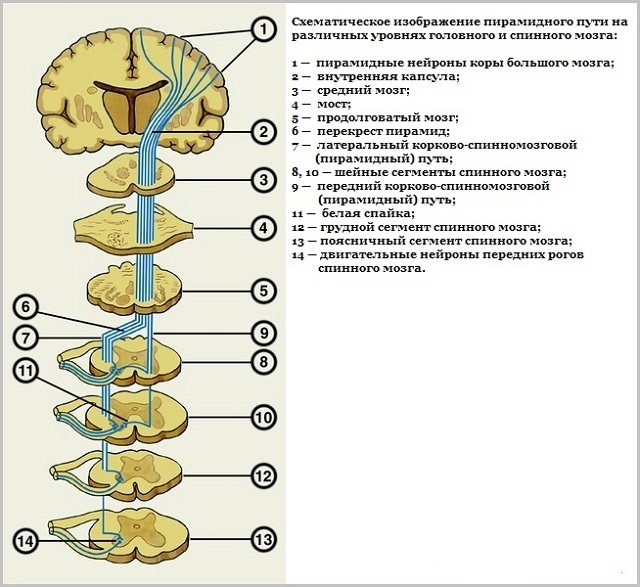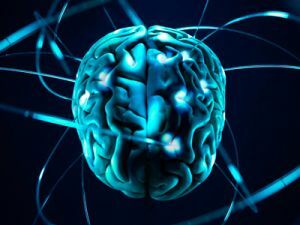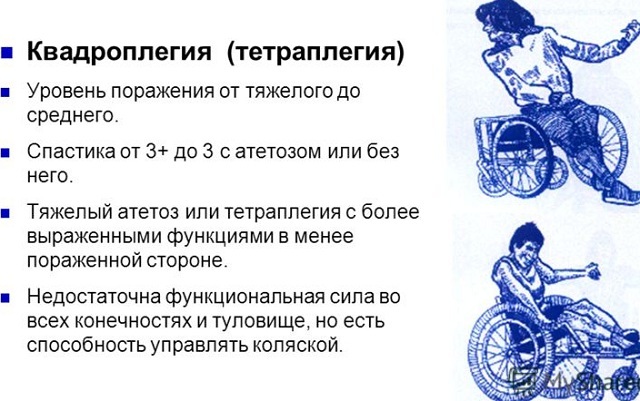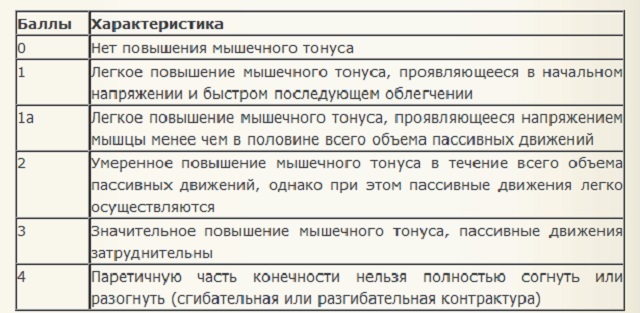 Pyramidal syndrome or pyramidal insufficiency syndrome is also called a ballerina syndrome walking on tiptoe, or equinus setting of feet.
Pyramidal syndrome or pyramidal insufficiency syndrome is also called a ballerina syndrome walking on tiptoe, or equinus setting of feet.
This violation can be a consequence of a whole range of factors. In the overwhelming majority of cases, it is accompanied by muscular dystrophy of varying degrees, associated with hypertension of the shin and foot.
The defeat of pyramidal pathways with bilateral muscular dystonia is usually diagnosed in newborns or children in the first year of life, less often it occurs in children two to three years of age.
Anatomical reference
The medulla oblongata, connecting the brain with the dorsal, is responsible for the work of complex reflexes. This organ consists of cells of a special pyramidal shape, which they call pyramids. Therefore, the syndrome is called pyramidal. Violation of coordination of movements is a consequence of damage to the above-mentioned cells.
The main reason for the development of such a pathology in a baby is a mechanical or ischemic intrauterine trauma of the cervical spinal cord. When blood flow is disturbed in the cervical thickening and the brainstem, the muscle tone of the limb flexors undergoes a significant deviation from the norm.
The severity of the syndrome is directly related to the severity of the brain damage. The mild form of insufficiency manifests itself in the stiffness of the hands, and the more common ischemia adds to the symptoms of impaired motor activity of the lower extremities: when trying to put the baby on the legs, it relies solely on socks, that is, the distal foot is working.

Syndrome of pyramidal insufficiency in children
In infants of the first months of life, the pyramidal syndrome usually manifests an increased tonus of the muscles of the arms and legs( they become tightly clamped), the lack of the ability to hold the head, the flexing of the fingers when checking the step reflex( walking on the fingers)signs.
 Older children suffering from pyramidal syndrome can always stand and - or walk on tiptoe, quickly get tired and constantly ask for "handles."Some small patients do not want to walk at all and complain of pain in the legs. It is difficult for parents to separate such complaints from simple whims, because two - three-year-olds can not explain them clearly.
Older children suffering from pyramidal syndrome can always stand and - or walk on tiptoe, quickly get tired and constantly ask for "handles."Some small patients do not want to walk at all and complain of pain in the legs. It is difficult for parents to separate such complaints from simple whims, because two - three-year-olds can not explain them clearly.
In the question whether it is necessary to treat this violation, the main thing is the severity of the problem. With a minor lesion of the baby it is just to observe the precinct neurologist. It is also necessary to help the child with a massage, baths and a specially developed set of physical exercises.
With a more extensive lesion or untimely or incorrect treatment, a child may begin to lag behind the norms of motor development. In this case, the appearance of signs of a neurological deficit that were not seen on the primary examination is possible. Such children should immediately begin treatment.
About the causes and symptoms of
Pyramidal insufficiency in the legs in children can develop against the background of the following pathologies:
- birth injuries;

- congenital lesions of the nervous system( cerebral palsy, hydrocephalus and others);
- brain hypoxia;
- viral and bacterial infections;
- purulent inflammation of the spinal cord or brain;
- tumors;
- disturbances of cerebrospinal fluid flow;
- meningitis, encephalitis.
Externally expressed symptoms:
- jaw chin, as well as legs and pens;
- difficulties with keeping things;
- head tilting;
- poor finger control;
- walking on tiptoe;
- speech disorder;
- lowered intelligence.
Syndrome of pyramidal insufficiency in children can not be diagnosed with absolute accuracy only according to medical examination. To obtain exhaustive data, it is necessary to pass all the tests prescribed by the physician. Only on the basis of their results, the correct diagnosis is possible.
"Adult" causes of
Pyramidal insufficiency is not a disease, but a syndrome. However, this does not prevent many doctors from classifying pathology as a disease and making an unambiguous diagnosis. Physicians often refer to it as central paralysis or paresis.
If the syndrome of pyramidal insufficiency in the smallest children can be a consequence of birth trauma, hypoxia or anomalies of the intrauterine development, then the adult syndrome is most often observed in people suffering from cancer or vascular or heart disease.
Pyramidal insufficiency in adults develops due to these reasons:
- inflammation in the brain tissues( encephalitis, meningitis or similar diseases);
- pathological changes in cerebral circulation( eg, due to a stroke);
- mechanical damage to the skull, resulting in a violation of the process of transmission of nerve impulses;
- is a benign or malignant tumor of the brain.
Pyramidal syndrome in adult patients is an acquired pathology, the treatment of which involves eliminating not only the symptoms but also the root causes of the disorders.
Clinical picture and diagnostic methods
To identify pyramidal syndrome in adults, a simple examination of a neurologist is not enough. The patient must undergo a number of modern diagnostic procedures. To obtain exhaustive information about the patient's medical condition, a neurologist will need the results of the following examinations: 
- magnetic resonance imaging ( appointed with seizures or suspicion of epilepsy);
- computed tomography of the brain ;
- electroencephalography , which helps to track hidden convulsions( in most cases they occur in a dream and therefore can not be detected on examination of a neurologist);
- electromyography , which allows to determine the electric potential of muscles;
- Ultrasound of the brain ( with suspected tumor formation).
Pyramidal insufficiency in adulthood also manifests itself in more noticeable symptoms that can be identified on medical examination:
- hypertension;
- increased muscle tone of the hands and feet;
- convulsions;
- complete or partial paralysis of different parts of the body;
- violations of reflex activity, in particular, a decrease in its speed;
- in some cases, especially if the lesion has overtaken the hypothalamic-pituitary system, there may be sexual dysfunction and increased body weight.
How to treat and whether it is necessary?
If pyramidal insufficiency is not accompanied by another, more serious diagnosis( from the above lists), physiotherapy procedures are sufficient to eliminate it. To treat children everywhere use massage. A professional masseur helps the  strengthen muscles and relieve hypertonia. Parents do the same with the child at home, a set of special preventive exercises.
strengthen muscles and relieve hypertonia. Parents do the same with the child at home, a set of special preventive exercises.
They also help to improve the physical activity and strengthen the body swimming, gymnastics, exercises for coordination of movements, balneotherapy( healing baths).This recommendation is relevant for both children and adults.
In addition, the doctor can prescribe vitamins, microcirculatory activating vasoactive substances or drugs to improve the metabolism of nerve cells( Nootropil, Cerebrolysin, Encephabol and others).Normalize the conduct of nerve impulses help Proserin and Dibazol. Improve muscle tone with the help of vitamins E and B, as well as drugs Baclofen, Lioresal and Midokalm. 
Neurosurgical therapy is prescribed if there are injuries to the spinal cord or brain, or tumors. Surgical intervention is used for circulatory disorders in the brain, malformations of the cerebral vessels, as well as for intracerebral hematoma and thrombosis of the extracerebral arteries.
Persons suffering from this pathology, especially those who are only learning to walk, need to wear special orthopedic shoes. It is distinguished by a closed front and a tight back.
Adults for the treatment of pyramidal insufficiency are assigned tangible physical activity: running, swimming, walking, physical therapy and sports. Excellent results are given by exercise therapy, acupressure and reflexology.
If the syndrome has arisen against a background of another disease, the main emphasis should be made on healing from it. It is also important to restore the patient's motor activity, if there is paralysis. However, do not forget about the need to stop the symptoms of the described pathology;in particular, this is important for young patients.
To avoid such an unpleasant and dangerous pathological condition as pyramidal insufficiency, it is necessary:
- to carefully monitor their health and children's health;
- take all necessary measures to prevent injuries that can become provocateurs of pathology development;
- in a timely manner to treat diseases against which the syndrome may occur, and also to take measures to prevent them.



